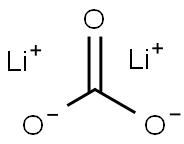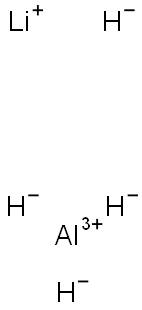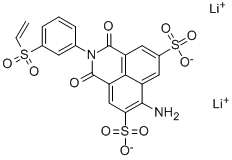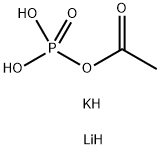Lithium
Synonym(s):;Lithium;Lithium atom;Lithium element;Lithium foil
- CAS NO.:7439-93-2
- Empirical Formula: Li
- Molecular Weight: 6.94
- MDL number: MFCD00134051
- EINECS: 231-102-5
- SAFETY DATA SHEET (SDS)
- Update Date: 2025-01-27 09:38:02

What is Lithium?
Description
Lithium is an alkali metal with physiologic actions similar to potassium and sodium. Lithium was discovered as a salt in 1817 by Johan August Arfwedson. It does not occur in nature as a free metal but is found in minerals such as spodumene, petalite, and eucryptite. It is the 27th most abundant element in Earth’s crust. Lithium was used to treat gout, as a salt substitute, and as a major constituent of the soft drink 7-Up before 1950.
Chemical properties
Lithium is a silvery to grayish-white metal that turns yellow on exposure to air and/or moisture.
Physical properties
In the metallic state, lithium is a very soft metal with a density of 0.534 g/cm3. When asmall piece is placed on water, it will float as it reacts with the water, releasing hydrogen gas.Lithium’s melting point is 179°C, and it has about the same heat capacity as water, with aboiling point of 1,342°C. It is electropositive with an oxidation state of +1, and it is an excellent conductor of heat and electricity. Its atom is the smallest of the alkali earth metals andthus is the least reactive because its valence electron is in the K shell, which is held closest toits nuclei.
Isotopes
There are two stable lithium isotopes: Li-6.015, which makes up 7.5% of all lithium atoms, and Li-7.016, which makes up 92.5% of lithium atoms found in the Earth’scrust. Less prevalent isotopes of lithium are Li-4, Li-5, Li-8, Li-9, Li-10, and Li-11. Theyare unstable with short half-lives and make up only a very small fraction of Lithium’stotal averaged atomic weight.
Origin of Name
The name lithium comes from the Greek word lithos, meaning “stone” because it was found in rocks on Earth.
Occurrence
Lithium ranks 33rd among the most abundant elements found on Earth. It does not existin pure metallic form in nature because it reacts with water and air. It is always combinedwith other elements in compound forms. These lithium mineral ores make up only about0.0007%, or about 65 ppm, of the Earth’s crust.Lithium is contained in minute amounts in the mineral ores of spodumene, lepidolite, andamblygonite, which are found in the United States and several countries in Europe, Africa, andSouth America. High temperatures are required to extract lithium from its compounds and byelectrolysis of lithium chloride. It is also concentrated by solar evaporation of salt brine in lakes.Metallic lithium is produced on a commercial scale by electrolysis of molten lithium chloride (LiCl) that is heated as a mixture with potassium chloride (KCl). Both have a rather highmelting point, but when mixed, the temperature required to melt them (400°C) is severalhundred degrees lower than their individual melting points. This liquid mixture of LiCl andKCl becomes the electrolyte. The anode is graphite (carbon) and the cathode is steel. Themolten liquid positive lithium cations collect at the cathode while negative chlorine anionscollect at the anode, and the potassium chloride remains in the electrolyte. Each positive ion oflithium that collects at the cathode gains an electron, thus producing neutral atoms of moltenlithium metal, which is then further purified.
History
Discovered by Arfvedson in 1817. Lithium is the lightest of all metals, with a density only about half that of water. It does not occur free in nature; combined it is found in small amounts in nearly all igneous rocks and in the waters of many mineral springs. Lepidolite, spodumene, petalite, and amblygonite are the more important minerals containing it. Lithium is presently being recovered from brines of Searles Lake, in California, and from Nevada, Chile, and Argentina. Large deposits of spodumene are found in North Carolina. The metal is produced electrolytically from the fused chloride. Lithium is silvery in appearance, much like Na and K, other members of the alkali metal series. It reacts with water, but not as vigorously as sodium. Lithium imparts a beautiful crimson color to a flame, but when the metal burns strongly the flame is a dazzling white. Since World War II, the production of lithium metal and its compounds has increased greatly. Because the metal has the highest specific heat of any solid element, it has found use in heat transfer applications; however, it is corrosive and requires special handling. The metal has been used as an alloying agent, is of interest in synthesis of organic compounds, and has nuclear applications. It ranks as a leading contender as a battery anode material because it has a high electrochemical potential. Lithium is used in special glasses and ceramics. The glass for the 200-inch telescope at Mt. Palomar contains lithium as a minor ingredient. Lithium chloride is one of the most hygroscopic materials known, and it, as well as lithium bromide, is used in air conditioning and industrial drying systems. Lithium stearate is used as an all-purpose and hightemperature lubricant. Other lithium compounds are used in dry cells and storage batteries. Seven isotopes of lithium are recognized. Natural lithium contains two isotopes. The metal is priced at about $1.50/g (99.9%).
Characteristics
While classified as an alkali metal, lithium also exhibits some properties of the alkali earthmetals found in group 2 (IIA). Lithium is the lightest in weight and softest of all the metalsand is the third lightest of all substances listed on the periodic table, with an average atomicweight of about 7. (The other two are hydrogen and helium.) Although it will float on water,it reacts with water, liberating explosive hydrogen gas and lithium hydroxide (2Li + 2H2O →2LiOH + H2?). It will also ignite when exposed to oxygen in moist air (4Li + O2 → 2Li2O).It is electropositive and thus an excellent reducing agent because it readily gives up electrons inchemical reactions. Lithium is the only metal that reacts with nitrogen at room temperature.When a small piece of the metal, which is usually stored in oil or kerosene, is cut, the newsurface has a bright, shiny, silvery surface that soon turns gray from oxidation.
The Uses of Lithium
The most widely known use of lithium is that of lithium carbonate in treating manic-depressive affective disorders; the mechanism by which it alleviates depression in some people is not known. Industrially, lithium and its compounds are used in metal alloys, lubricants, nuclear reactor coolant, ceramics, alkaline storage batteries, and electronic tubes. It is also used as a catalyst and as a reducing agent.
The Uses of Lithium
In production of organometallic alkyl and aryl lithium compounds; in production of high-strength, low-density aluminum alloys for the aircraft industry; extremely tough, low-density alloys with aluminum and magnesium used for armour plate and aerospace components. In polymerization catalysts for the polyolefin plastics industry; manufacture of high-strength glass and glass-ceramics. As anode in electrochemical cells and batteries; as chemical intermediate in organic syntheses. Lithium stearate as thickener and gelling agent to transform oils into lubricating greases.
The Uses of Lithium
Lithium has many uses in today’s industrial society. It is used as a flux to promote the fusing of metals during welding and soldering. It also eliminates the formation of oxides duringwelding by absorbing impurities. This fusing quality is also important as a flux for producingceramics, enamels, and glass.A major use is as lithium stearate for lubricating greases. It makes a solid grease that canwithstand hard use and high temperatures.Lithium is used to manufacture electric storage cells (batteries) that have a long shelf lifefor use in heart pacemakers, cameras, and so forth.Some lithium compounds are used as rocket propellants, nuclear reactor coolants, alloyhardeners, and deoxidizers and to make special ceramics.Lithium is a source of alpha particles when bombarded in a nuclear accelerator. The following occurs: lithium nuclei (3 protons + 4 neutrons) are targeted by high-speed protons(hydrogen nuclei), resulting in lithium absorbing a proton to form 4 protons + 4 neutrons,which become two alpha particles (helium nuclei). For example, see the following equation:1H + 3Li = 2He + 2He. This is an example of the first man-made nuclear reaction produced bySir John Cockcroft (1897–1967) and Ernest Walton (1903–1995) in 1929.Several compounds of lithium are used as pharmaceuticals to treat severe psychoticdepression (as antidepressant agents). And lithium carbonate is also used as a sedative ormild tranquilizer to treat less severe anxiety, which is a general feeling of uneasiness or distressabout present condition or future uncertainties. Lithium is also used in the production ofvitamin A.
What are the applications of Application
Lithium is an important metal in synthesis and industry
Definition
A light silvery moderately reactive metal; the first member of the alkali metals (group 1 of the periodic table). It occurs in a number of complex silicates, such as spodumene, lepidolite, and petalite, and a mixed phosphate, tryphilite. It is a rare element accounting for 0.0065% of the Earth’s crust. Lithium ores are treated with concentrated sulfuric acid and lithium sulfate subsequently separated by crystallization. The element can be obtained by conversion to the chloride and electrolysis of the fused chloride or of solutions of LiCl in pyridine.
Lithium has the electronic configuration 1s22s1 and is entirely monovalent in its chemistry. The lithium ion is, however, much smaller than the ions of the other alkali metals; consequently it is polarizing and a certain degree of covalence occurs in its bonds. Lithium also has the highest ionization potential of the alkali metals.
The element reacts with hydrogen to form lithium hydride, LiH, a colorless high-melting solid, which releases hydrogen at the anode during electrolysis (confirming the ionic nature Li+H–). The compound reacts with water to release hydrogen and is also frequently used as a reducing agent in organometallic synthesis. Lithium reacts with oxygen to give Li2O (sodium gives the peroxide) and with nitrogen to form Li3N on fairly gentle warming. The metal itself reacts only slowly with water, giving the hydroxide (LiOH) but lithium oxide reacts much more vigorously to give again the hydroxide; the nitride is hydrolyzed to ammonia. The metal reacts with halogens to form halides (LiX).
Apart from the fluoride the halides are readily soluble both in water and in oxygen- containing organic solvents. In this property lithium partly resembles magnesium which has a similar charge/size ratio. Compared to the other carbonates of group 1, lithium carbonate is thermally unstable decomposing to Li2O and CO2. This is because the small Li+ ion leads to particularly high lattice energies favouring the formation of Li2O.
Lithium also forms a wide range of alkyl- and aryl-compounds with organic compounds, which are particularly useful in organic synthesis. Lithium compounds impart a characteristic purple color to flames. Symbol: Li; m.p. 180.54°C; b.p. 1347°C; r.d. 0.534 (20°C); p.n. 3; r.a.m. 6.941.
Biological Functions
For more than 40 years, Li+ has been used to treat mania.
While it is relatively inert in individuals without a
mood disorder, lithium carbonate is effective in 60 to
80% of all acute manic episodes within 5 to 21 days of
beginning treatment. Because of its delayed onset of action
in the manic patient, Li+ is often used in conjunction
with low doses of high-potency anxiolytics (e.g., lorazepam)
and antipsychotics (e.g. haloperidol) to
stabilize the behavior of the patient. Over time, increased
therapeutic responses to Li+ allow for a gradual
reduction in the amount of anxiolytic or neuroleptic required,
so that eventually Li+ is the sole agent used to
maintain control of the mood disturbance.
In addition to its acute actions, Li+ can reduce the
frequency of manic or depressive episodes in the bipolar
patient and therefore is considered a mood-stabilizing
agent. Accordingly, patients with bipolar disorder are
often maintained on low stabilizing doses of Li+ indefinitely
as a prophylaxis to future mood disturbances.
Antidepressant medications are required in addition to
Li+ for the treatment of breakthrough depression.
General Description
A soft silvery metal that is normally grayish white due to oxide formation. Spontaneous ignition is likely if heated to melting point.
Air & Water Reactions
Highly flammable. Is readily ignited by and reacts with most extinguishing agents such as water, carbon dioxide, and carbon tetrachloride [Mellor 2, Supp 2:71. 1961]. Reacts with water to form caustic Litium hydroxide and hydrogen gas (H2). Litium is spontaneously flammable in air if heated to 180°C if the surface of the metal is clean.
Reactivity Profile
Burns in air, oxygen, nitrogen, hydrogen, and carbon dioxide. The reactions can become extremely violent at higher temperatures. The disposition to ignite of surfaces of molten Litium exposed to any of these gases is increased by the presence of Litium oxides and nitrides. Litium reacts avidly with water to generate gaseous hydrogen and a solution of Litium hydroxide (a caustic). Contact with halogenated hydrocarbons can produce extremely violent reactions, especially on impact [Haz. Chem. Data 1966]. Boron trifluoride reacts with incandescence when heated with Litium [Merck 11th ed. 1989]. Maleic anhydride decomposes explosively in the presence of Litium [Chemical Safety Data Sheet SD-88. 1962, Chem. Haz. Info. Series C-71. 1960]. Chlorine vapors and Litium react producing a luminous flame [Mellor 2, Supp. 1:380. 1956]. The product of the reaction between Litium and carbon monoxide, Litium carbonyl, detonates violently with water, igniting the gaseous products [Mellor 2, Supp. 2:84. 1961]. The reaction of Litium and ferrous sulfide starts around 260°C with subsequent rise in temperature to 950° C [Mellor 2, Supp. 2:80. 1961]. A truck, which was carrying Litium batteries, sodium dithionite and derivatives of cyanide, caught fire; multiple explosions occurred as the cargo was exposed to the air.
Hazard
Lithium metal is highly flammable, explosive, and toxic. It will ignite when exposed towater, acids, and even damp air. Metallic lithium is a reducing agent that readily gives up anelectron to active oxidizing agents that require an electron to complete their outer valenceshell—thus the violent chemical reaction that follows. Lithium will even burn in nitrogengas, which is relatively stable. In addition, many of its compounds also react violently whenexposed to water.
As an element (metal), it must be stored in oil or in some type of air and moisture-free container,given that many of its compounds will also burn when exposed to air or water. Lithiumfires are difficult to extinguish. If water is poured on the fire, lithium will just burn faster orexplode. A supply of special chemicals or even dry sand is required to extinguish such fires.
Solutions and powders of several lithium salts are very toxic to the human nervous system,thus requiring close observation by a physician when used as antidepressant drugs.
Health Hazard
Lithium can react with moisture on the skinto produce corrosive hydroxide. Thus, contactof this metal with the skin or eyes can causeburn. The fumes are irritating to the skin,eyes, and mucous membranes. Ingestion of lithium can cause kidney injury, especiallywhen sodium intake is limited (Merck 1996).
Fire Hazard
Lithium is less active than sodium or potassium. Finely divided metal ignites spontaneously in air. The ignition of the bulk metal occurs when heated to its melting point. It burns with a carmine-red flame. Burning evolves dense white and opaque fumes. Vigorous reaction occurs when the metal is mixed with water. The heat of reaction, if not dissipated, can ignite or explode hydrogen that is liberated.
Violent explosive reactions occur with carbon tetrachloride; carbon tetrabromide; chloroform, bromoform, or iodoform (on heating); carbon monoxide in the presence of water; phosphorus (on heating); arsenic (on heating); and sulfur (molten). Among the substances that constitute high explosion hazards, the halogenated hydrocarbons are most significant. A number of compounds of this class in addition to those mentioned above form impact-sensitive products that can detonate on heating or impact.
Heating with nitric acid can cause fires. Lithium reacts with nitrogen at elevated temperatures to form lithium nitride, which can ignite on heating.
Flammability and Explosibility
Contact with water liberates highly flammable gases
Pharmaceutical Applications
Lithium inhibits GSK-3 and InsP, and both pathways have therefore been suggested to be involved in the
treatment of BD and schizophrenia. The theory behind this hypothesis is that overactive InsP signalling in the
brain of these patients potentially causes BD and this may be reduced by the inhibitory effect of lithium on
such signalling.
It is believed that lithium potentially can protect against disease-induced cell death. GSK-3 has been implicated in the origins of schizophrenia, but
with the availability of many antipsychotic drugs on the market, lithium ions are not in common use for the
treatment of schizophrenia.
There are also several direct roles of lithium in the treatment of Alzheimer’s disease. Alzheimer’s disease
is a neurodegenerative brain disorder causing neuronal dysfunction and ultimately cell death.
Onset occurs with the accumulation of extracellular senile plaques composed of amyloid-β peptides and with
the accumulation of intercellular neurofibrillary tangles.
Industrial uses
This lightest of all metals is found in more than 40 minerals, but is obtained chiefly from lepidolite, spodumene, and salt brines.
It is unstable chemically and burns in the air with a dazzling white flame when heated to just above its melting point. The metal is silvery white but tarnishes quickly in the air. The metal is kept submerged in kerosene. Lithium resembles sodium, barium, and potassium, but has a wider reactive power than the other alkali metals. It combines easily with oxygen, nitrogen, and sulfur to form low melting-point compounds that pass off as gases, and is thus useful as a deoxidizer and degasifier of metals.
Mechanism of action
Lithium is a monovalent cation that can replace Na+ in
some biological processes. It can be argued that competition
by Li+ for active Na+ sites may lead to altered
neuronal functions that may account for its antimanic
and mood-stabilizing actions. In this regard, the failure
of Li+ to maintain a normal membrane potential because
of its lower affinity for the Na+ pump has been
demonstrated. However, this action of Li+ would not
explain its relatively selective effects on the CNS, sparing
comparable excitable tissues (e.g. cardiac muscle) in
the periphery.Moreover, an action on membrane polarity
would be so general that the entire pool of brain
neurons would be affected by Li+. It seems more reasonable
that Li+ produces its psychotropic actions by
perturbation of molecular events common to a few CNS
synapses that might have been disturbed during the
course of the manic-depressive illness.
Recently, attention has focused on the actions of Li+
on receptor-mediated second-messenger signaling systems
of the brain. In this regard, interactions between
Li+ and guanine nucleotide (GTP) binding proteins (G
proteins) have been the target of many studies, since G
proteins play a pivotal role in the function of many second-
messenger signaling systems. Lithium is capable of
altering G-protein function. It can diminish the coupling
between the receptor recognition site and the G
protein.The molecular mechanism involves the competition
for Mg++ sites on the G protein, which are essential
for GTP binding. Guanine nucleotide activates the
G protein. Accordingly, in the presence of Li+, receptormediated
activation of these G proteins is attenuated.
This action of Li+ has been selectively demonstrated for
G proteins associated with β-adrenoceptors and M1
muscarinic receptors of the CNS.
While it is not possible at present to assign a therapeutic
role to this action of Li+, it is a step toward explaining
the stabilizing actions of this drug. Since several
neurotransmitter receptors share common G
protein–regulated second-messenger signaling systems,
Li+ could simultaneously correct the alterations at individual
synapses associated with depression and mania
by a single action on the function of specific G proteins.
An additional action of Li+ is interruption of the
phosphatidylinositide cycle through an inhibitory action
on inositol phosphate metabolism. By this mechanism,
depletion of membrane inositol and the phosphoinositide-
derived second-messenger products diacylglycerol
and inositol triphosphate ultimately reduces signaling
through receptor systems dependent on the formation
of these products. It is presently unclear to what extent
inhibition of inositol phosphate metabolism contributes
to the therapeutic properties of Li+ in bipolar patients.
Side Effects
The frequency and severity of adverse reactions associated
with Li+ therapy are directly related to serum levels Since Li+ has a low therapeutic index (approximately
3) and a narrow therapeutic window (0.5–1.5
mEq/L), the frequent measurement of serum steadystate
concentrations is standard practice in the treatment
of bipolar patients.
Adverse reactions occurring at serum trough levels
(12 hours after the last dose) below 1.5 mEq/L are generally
mild, whereas those seen above 2.5 mEq/L are
usually quite severe. Mild toxicity is usually expressed
as nausea, vomiting, abdominal pain, diarrhea, polyuria,
sedation, and fine tremor. If the serum concentration of
Li+ progressively rises above 2 mEq/L, frank neurological
toxicity appears, beginning with mental confusion
and progressing to hyperreflexia, gross tremor,
dysarthria, focal neurological signs, seizures, progressive
coma, and even death.
Adverse effects sometimes seen during chronic
maintenance of bipolar patients with Li+ include hypothyroidism
(approximately 5%) and nephrogenic dia-betes insipidus.Both conditions are readily reversible by
discontinuation of Li+. Routine laboratory monitoring
includes TSH (thyroid-stimulating hormone) and serum
creatinine measurements to detect hypothyroidism and
any change in renal capacity to clear the drug.
Potential Exposure
Lithium is used in inorganic syntheses; the manufacture of storage batteries; heat transfer liquids; and metal alloys.
First aid
If this chemical gets into the eyes, remove anycontact lenses at once and irrigate immediately for at least15 min, occasionally lifting upper and lower lids. Seek medical attention immediately. If this chemical contacts the skin, remove contaminated clothing and wash immediatelywith soap and water. Seek medical attention immediately. Ifthis chemical has been inhaled, remove from exposure,begin rescue breathing (using universal precautions, including resuscitation mask) if breathing has stopped and CPR ifheart action has stopped. Transfer promptly to a medicalfacility. When this chemical has been swallowed, get medical attention. Give large quantities of water and inducevomiting. Do not make an unconscious person vomit.Medical observation is recommended for 24-48 h afterbreathing overexposure, as pulmonary edema may bedelayed. As first aid for pulmonary edema, a doctor orauthorized paramedic may consider administering a corticosteroid spray.
Environmental Fate
Lithium is a soft, silver-white metal that is highly reactive and
flammable. It is typically stored in mineral oil. Lithium
concentrations in the earth’s crust are estimated to be
20–70 ppm by weight. Lithium is widely distributed in nature.
Some trace amounts can be found in many minerals, rocks, and
soils and in many natural water sources. In air, lithium
compounds exist as particulate but their ionic nature makes
them nonvolatile and may be removed by wet and dry deposition.
In soil, lithium compounds are expected to adsorb
moderately to soils and sediments. A lithium ion would not
undergo oxidation–reduction reactions and exists in its +1
oxidation or dissolved ions. Lithium ions may undergo
precipitation, sorption, or ligand exchange reactions. In water,
lithium compounds are not expected to adsorb to suspended
solids and sediments. Volatilization and bioconcentration are
insignificant.
Concentrations of lithium in surface waters are typically
very low (<0.04 mg l-1). Seepage into ground water and
surface water from storage sites (e.g., the US Department of
Energy’s Y-12 plant) may lead to concentration much higher
(0.15 mg l-1).
Storage
(1) Color Code—Yellow Stripe: ReactivityHazard; Store separately in an area isolated from flammables, combustibles, or other yellow coded materials.Reacts with body moisture, forming corrosive lithiumhydroxide: (2) Color Code—White: Corrosive or ContactHazard; Store separately in a corrosion-resistant location.(3) Color Code—Blue: Health Hazard/Poison: Store in asecure poison location. Prior to working with this chemicalyou should be trained on its proper handling and storage.Protect storage containers from physical damage. Lithiummust be stored to avoid contact with water, halogenatedcompounds, carbon dioxide, oxidizers, strong acids, alcohols, metals, chlorinated arsenic compounds, hydrocarbons,sulfur, acetonitrile, nitrogen, and many other materials,since violent reactions occur. Store in tightly closed containers under kerosene or neutral oil in a cool, wellventilated area. Sources of ignition, such as smoking and open flames, are prohibited where lithium is used, handledor stored in a manner that could create a potential fire orexplosion hazard. Wherever lithium is used, handled, manufactured, or stored, use explosion-proof electrical equipmentand fittings.
Shipping
UN1415 Lithium, Hazard Class: 4.3; Labels: 4.3-Dangerous when wet material. UN3089 Metal powders, flammable, n.o.s., Hazard Class: 4.1; Labels: 4.1- Flammable solid
Purification Methods
After washing with pet ether to remove storage oil, lithium is fused at 400o and then forced through a 10-micron stainless-steel filter with argon pressure. It is again melted in a dry-box, skimmed, and poured into an iron distillation pot. After heating under a vacuum to 500o, cooling and returning it to the dry-box for a further cleaning of its surface, the lithium is distilled at 600o using an all-iron distillation apparatus [Gunn & Green J Am Chem Soc 80 4782 1958].
Toxicity evaluation
The exact mechanism of lithium toxicity is unknown. It may be related to lithium’s displacement of potassium, producing an unusual equilibrium within the cells. Another hypothesis is that lithium is competitive with sodium for binding sites in various organs such as the kidney and the central nervous system.
Incompatibilities
Violent reaction with water, forming flammable hydrogen gas and corrosive lithium hydroxide, a strong caustic solution. Heating may cause violent combustion or explosion. Finely divided particles or powdered form may ignite spontaneously in air. Contact with air forms corrosive fumes of lithium hydroxide. Violent reaction with oxidizers, acetonitrile, nitric acid; arsenic, bromobenzene, carbon tetrachloride; hydrocarbons, halogens, halons, sulfur, and many other substances. Forms impactand friction-sensitive mixtures with bromobenzene, carbon tetrabromide, chloroform (weak explosion), iodoform, halogens, halocarbons, methyl dichloride; methyl diiodide and other substances. Attacks plastics, rubber, ceramic materials; concrete, sand, and metal alloys: cobalt, iron, manganese, nickel
Properties of Lithium
| Melting point: | 180 °C (lit.) |
| Boiling point: | 1342 °C (lit.) |
| Density | 0.534 g/mL at 25 °C (lit.) |
| vapor pressure | 1 hPa (723 °C) |
| storage temp. | water-free area |
| solubility | reacts with H2O |
| form | wire |
| Specific Gravity | 0.534 |
| color | Silvery |
| Odor | Odorless |
| PH Range | >12 |
| Resistivity | 9.446 μΩ-cm, 20°C |
| Water Solubility | REACTS |
| Sensitive | air sensitive, moisture sensitive |
| Merck | 13,5542 |
| Exposure limits | ACGIH: TWA 2 ppm; STEL 4 ppm OSHA: TWA 2 ppm(5 mg/m3) NIOSH: IDLH 25 ppm; TWA 2 ppm(5 mg/m3); STEL 4 ppm(10 mg/m3) |
| Stability: | Stable, but reacts violently with water. |
| CAS DataBase Reference | 7439-93-2(CAS DataBase Reference) |
| NIST Chemistry Reference | Lithium(7439-93-2) |
| EPA Substance Registry System | Lithium (7439-93-2) |
Safety information for Lithium
| Signal word | Danger |
| Pictogram(s) |
 Flame Flammables GHS02  Corrosion Corrosives GHS05 |
| GHS Hazard Statements |
H260:Substances And Mixtures Which, In Contact With Water,Emit Flammable Gases H314:Skin corrosion/irritation |
| Precautionary Statement Codes |
P223:Keep away from any possible contact with water, because of violent reaction and possible flash fire. P280:Wear protective gloves/protective clothing/eye protection/face protection. P231+P232:Handle under inert gas. Protect from moisture. P305+P351+P338:IF IN EYES: Rinse cautiously with water for several minutes. Remove contact lenses, if present and easy to do. Continuerinsing. P370+P378:In case of fire: Use … for extinction. P422:Store contents under … |
Computed Descriptors for Lithium
Lithium manufacturer
New Products
Indole Methyl Resin tert-butyl 9-methoxy-3-azaspiro[5.5]undecane-3-carboxylate Boc-His(Boc)-OH 2-CTC Resin 4-Chloro-7-tosy1-7Hpyrrolo[2,3-d]pyrimidine 5,7-Dibromo-1H-indole 2,5-dichloro-N-hydroxy-4,6-dimethylpyridine-3-carboximidamide 2,2-Dimethoxy-7-azaspiro[3.5]nonane hydrochloride 4-chloromethyl-5-methyl-1,3-dioxol-2-one (DMDO-Cl) R-2-BENZYLOXY PROPIONIC ACID 1,1’-CARBONYLDIIMIDAZOLE 1,1’-CARBONYLDI (1,2-4 TRIAZOLE) N-METHYL INDAZOLE-3-CARBOXYLIC ACID 4-((2-hydroxyethyl)thio)benzoic acid 1-(TERT-BUTOXYCARBONYL)-2-PYRROLIDINONE Methyl 6-methylnicotinate 3-Pyridineacrylic acid tert-Butyl carbazate TETRAHYDRO-2H-PYRAN-3-OL 2-((4-morpholinophenylamino) (methylthio) methylene) malononitrile 3-(4-morpholinophenylamino)-5-amino-1H-pyrazole-4-carbonitrile 2,4-dihydroxybenzaldehyde 1,3-Diethyl-1,3-Diphenylurea Methyl 2-methylquinoline-6-carboxylateRelated products of tetrahydrofuran








You may like
-
 Lithium, 3.2mm (0.125 in.) Dia. CAS 7439-93-2View Details
Lithium, 3.2mm (0.125 in.) Dia. CAS 7439-93-2View Details
7439-93-2 -
 Lithium wire, 3.2mm (0.125 in.) Dia. CAS 7439-93-2View Details
Lithium wire, 3.2mm (0.125 in.) Dia. CAS 7439-93-2View Details
7439-93-2 -
 Lithium CAS 7439-93-2View Details
Lithium CAS 7439-93-2View Details
7439-93-2 -
 Lithium CAS 7439-93-2View Details
Lithium CAS 7439-93-2View Details
7439-93-2 -
 Lithium pieces, ≤10 mm, 99.9% CAS 7439-93-2View Details
Lithium pieces, ≤10 mm, 99.9% CAS 7439-93-2View Details
7439-93-2 -
 Lithium Metal CAS 7439-93-2View Details
Lithium Metal CAS 7439-93-2View Details
7439-93-2 -
 Lithium metal, 99.5% CAS 7439-93-2View Details
Lithium metal, 99.5% CAS 7439-93-2View Details
7439-93-2 -
 6Sl3210-5fb10-2uf2 Sinamics V90, Converter, Li, Fsa, 0.20 kW, 0.2kWView Details
6Sl3210-5fb10-2uf2 Sinamics V90, Converter, Li, Fsa, 0.20 kW, 0.2kWView Details
7439-93-2
